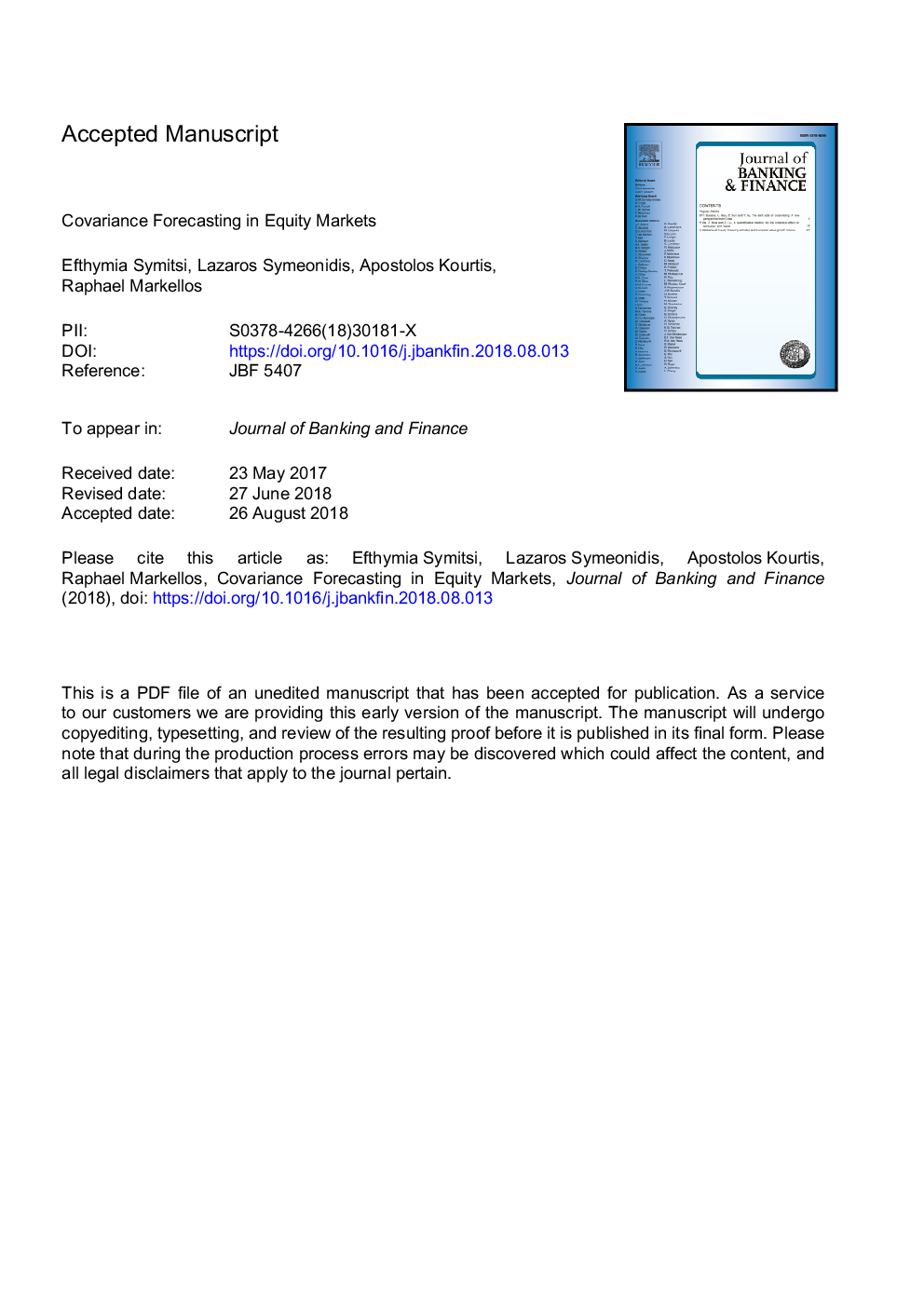| Article ID | Journal | Published Year | Pages | File Type |
|---|---|---|---|---|
| 10147150 | Journal of Banking & Finance | 2018 | 58 Pages |
Abstract
We compare the performance of popular covariance forecasting models in the context of a portfolio of major European equity indices. We find that models based on high-frequency data offer a clear advantage in terms of statistical accuracy. They also yield more theoretically consistent predictions from an empirical asset pricing perspective, and, lead to superior out-of-sample portfolio performance. Overall, a parsimonious Vector Heterogeneous Autoregressive (VHAR) model that involves lagged daily, weekly and monthly realised covariances achieves the best performance out of the competing models. A promising new simple hybrid covariance estimator is developed that exploits option-implied information and high-frequency data while adjusting for the volatility riskpremium. Relative model performance does not change during the global financial crisis, or, if a different forecast horizon, or, intraday sampling frequency is employed. Finally, our evidence remains robust when we consider an alternative sample of U.S. stocks.
Related Topics
Social Sciences and Humanities
Economics, Econometrics and Finance
Economics and Econometrics
Authors
Efthymia Symitsi, Lazaros Symeonidis, Apostolos Kourtis, Raphael Markellos,
